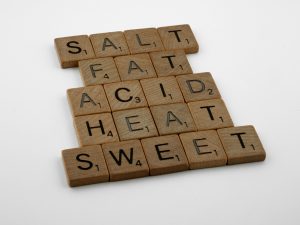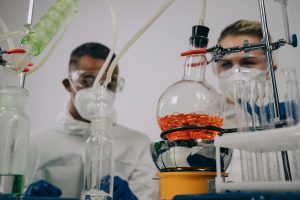Acid reflux
Acid reflux disorders have been extended to encompass not just the impact of gastroesophageal reflux upon the esophageal mucosa but also the contribution of acid reflux to laryngeal and pulmonary symptoms.
GER is the backflow of the stomach contents up to the esophagus. The incidence in the first year of life is approximately 67% at 4 to 5 months, 61 to 21% at 6 to 7 months, and below 5% at 12 months. GERD is generally characterized by the occurrence of GER symptoms or complications, not limited to regurgitations or vomiting.2-5 The term GERD has been employed in various contexts.
It has been used as a synonym of esophagitis or changed esophageal pH or to title conditions with atypical symptoms. respiratory symptoms. More recently, the Montreal Consensus Conference, in which Brazil and France were involved, published a definition and classification of gastroesophageal reflux disease. The group thus arrived at a definition of GERD as an illness that occurs when the reflux of stomach contents leads to troublesome symptoms and/or complications. The definition strengthened the adverse qualities of the symptoms whose effect might differ from patient to patient.
Symptoms of Acid reflux
GERD symptoms are less frequent than GER symptoms but are extremely widespread. A prevalence study described weekly heartburn feeling and acid regurgitation in about 2% of children aged between 3 to 9 years and in 5% to 8% of children aged between 10 to 17 years. Heartburn was detected alone in 17.8% of the children in the older age group. In the Western world, GERD prevalence among adults has been estimated between 10% to 20%.
The refluxate can be purely acidic or mixed with duodenum-gastric reflux. Acid reflux is more easily identified and therefore the pathophysiology, diagnosis and treatment are well established. The bile reflux is poorly understood, but has been associated with severe esophagitis. The diagnosis of mixed reflux is very problematic, and is one of the disadvantages of pH studies. There are no definite clinical trials involving mixed reflux in the literature. Thus, conclusions reached regarding the therapeutic treatment of GERD pertain to circumstances where acid reflux was diagnosed. Treatment for clinical conditions that likely only exist in association with mixed pattern reflux is yet to be defined.

GERD can be suspected after meticulous anamnesis and physical examination. The most frequent complaints in children are abdominal pain, very suggestive when related to meals, regurgitation or frequent vomiting, heartburn, morning pharyngodynia and early satiety and infrequently dysphagia. Irritability and frequent crying during feeding, reduction of feeding, failure to thrive, anemia, malaise and apnea in small infants and premature newborns are indicative of GERD and should prompt further investigation. Sandifer syndrome, with failure to thrive, anemia, hyperextension of the back and lateral head rotation is related to severe esophagitis. The most frequent extradigestive symptoms are respiratory tract related bronchial hyperreactivity, chronic cough, laryngitis, hoarseness, recurrent pneumonia, otitis and sinusitis.
Drugs now available to treat GERD do not affect the initial mechanism of the disease, i.e., transient lowering of the tone of the lower esophageal sphincter. Pharmacotherapy of GERD with symptoms or with esophageal damage is founded on suppression of acid production, especially using proton pump inhibitors.
When symptoms of the lower airway hyperreactivity exist together with GERD symptoms of the esophagus, inhibition of acid secretions should be of advantage in treating the respiratory disease with a causal interaction present; yet this is not typical. When there are no esophageal symptoms, esophageal 24-hour pH study should be performed before initiating pharmacologic treatment for GERD. Symptoms of respiration may be late to improve compared to esophageal symptoms. Recurrence of GERD is usual and should be treated with drugs again or indefinitely, as per clinical manifestation of the disease.
The proposals for pharmacologic treatment of GERD in children are mostly drawn from case series studies or studies in adults. There have been few randomized and controlled studies in children. Conducting more of such studies may confirm prevailing elements or create new elements of management But as a cohort patients with GERD have a higher chance of reflux happening during such attacks.
Gastro-oesophageal reflux has been transformed as a subject of study by the invention of combined 24-h oesophageal pH and multichannel intraluminal impedance monitoring. MII monitors gastro-oesophageal reflux events through altered resistance to alternating electrical current between a set of paired electrodes.
Combined oesophageal
pH-monitoring with MII in humans was conducted about a decade ago in a small group of healthy volunteers.7 The investigators noted that only about half of all reflux episodes detected by MII were also detected by pH-metry, concluding that the remainder were due to relatively pH-neutral reflux. Simultaneous oesophageal MII and pH monitors enable timing correlation of variations in oesophageal pH with reflux periods and have very good sensitivity in detecting acid pH <4 weakly acidic pH 4–7 and weakly alkaline pH >7reflux attacks.
Application of this technology is placing the potential contribution of weakly acid

ic and weakly alkaline reflux in both GERD and in symptom generation that is related to reflux events into the spotlight. Yet data on the percentage of
acidic, weakly acidic, or weakly alkaline reflux episodes in GERD patients have not been assessed by a systematic method previously. This systematic literature review estimates the percentages of acidic, weakly acidic, or weakly alkaline reflux episodes in GERD patients and examines how they are related to use of PPIs and symptoms.
METHODS
Systematic literature searches Investigative studies of adult patients with GERD on or off PPI therapy were identified by systematic searches of the literature up to September 2009 in PubMed and Embase.
A flow chart of the systematic searches and search strings. To be considered for inclusion, studies had to report data on the percentages of acid pH <4, weakly acidic pH 4–7 and weakly alkaline pH >7 reflux episodes, according to oesophageal pH-metry and MII monitoring. Studies published in a non-English language were excluded, as were studies that did not report the proportion of acid vs.

weakly acidic or weakly alkaline reflux episodes, or did not give data on which these proportions could be calculated studies giving only data on the median number of
episodes per patient, or studies describing just the percentage of the time that oesophageal pH was acidic and weakly acidic or weakly alkaline. Studies of the impact of surgery on reflux were excluded from this review.
RESULTS
The searches of the literature uncovered 21 studies in 664 patients with GERD which met the inclusion criteria for this review. Twelve of the trials reported on 374 patients on a PPI and 16 trials reported on 382 patients off a PPI. Most of the identified trials included patients with a history of symptoms of reflux after PPI administration. Study design data are provided in Table 1. Further data on the populations of patients and data correlating reflux with symptoms.
Seven of the studies provided data for patients on and off PPI treatment. Data on the mean number of reflux episodes and symptom episodes. In general the number of reflux episodes was not significantly different between patients on and off PPI treatment, although one study that reported only on nocturnal reflux noted a reduction in the number of reflux episodes with PPI treatment.
The frequency of reflux symptoms was 20–70% higher in patients off PPI therapy than in patients on PPI therapy in trials of patients with reflux symptoms despite PPI therapy. The phenomenon was even more dramatic in one study in which only patients with a history of good response to PPI therapy were included, with the frequency of reflux.
